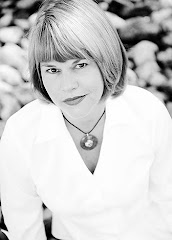This holiday season, I want to take a moment to tell my friends how much I appreciate their love and support. Each of you continues to surprise and amaze me, and as individuals you’ve brought much joy to my life. These are the qualities I love most about you:
Shannon: Your resilience, courage and determination. Your love of kids and dogs.
Kathy: Your work ethic, tenacity and intelligence; your willingness to share Kings’ tickets!
Liz: Your love of the environment and the work you’re doing; you make the world a better place.
Toni: Your sense of humor and remarkable style; your crazy Italian stories. Ti amo, Toni!
Kim: Your commitment to friends, family, and tradition; your desire to understand.
Chris: Your willingness to stretch yourself, and to show us how it’s done.
Laurie: Your candor and your confidence – you’re an inspiration because you’re real.
Lori: Your grace, your gentleness, your generosity of spirit.
Margaret: Your faith. Your love of reading. Your commitment to politics.
Lynn: Your life, so different from my own, has struck a wondrous chord. I long to know you better, and to learn more about Esther and Jonah.
Tony: Your eagerness to expand your knowledge; your outspokenness and smarts.
Andy: Your exuberant spirit and captivating smile; the stories you’ve yet to tell!
Gwen: Your tender side, your humanity, your potential. You’ve got a lot to give.
Firyal: Your illumination of a world unknown; I hunger to learn more.
Rich: Your willingness to be just who you are, in dress and attitude. You have the capacity to change men’s minds.
Alex: Your hard work (all that you’re doing!), your writing talent, your ear for dialogue.
Sandra: Your outlook – so smart and accepting; your knack for story telling. (I love that doggie, Taco.)
Greg: Your ability to paint a landscape using color and description.
Mary: Your warmth, curiosity and sincerity. You tell it like it is.
Courtney: Your spunk, quirkiness and originality. Your love of chocolate.
Bryan: Your programming skills extraordinaire; your calming effect on others.
Glenda: Your devotion to family. The memories we share – they number in the thousands.
Linda: Where to start? You, more than any other, live your life as a best example, showing me every day what it is to be a good person. A woman whose attitude outshines the stars, and whose belief is complete and unfailing.
I love you, my friends. Merry Christmas all.















